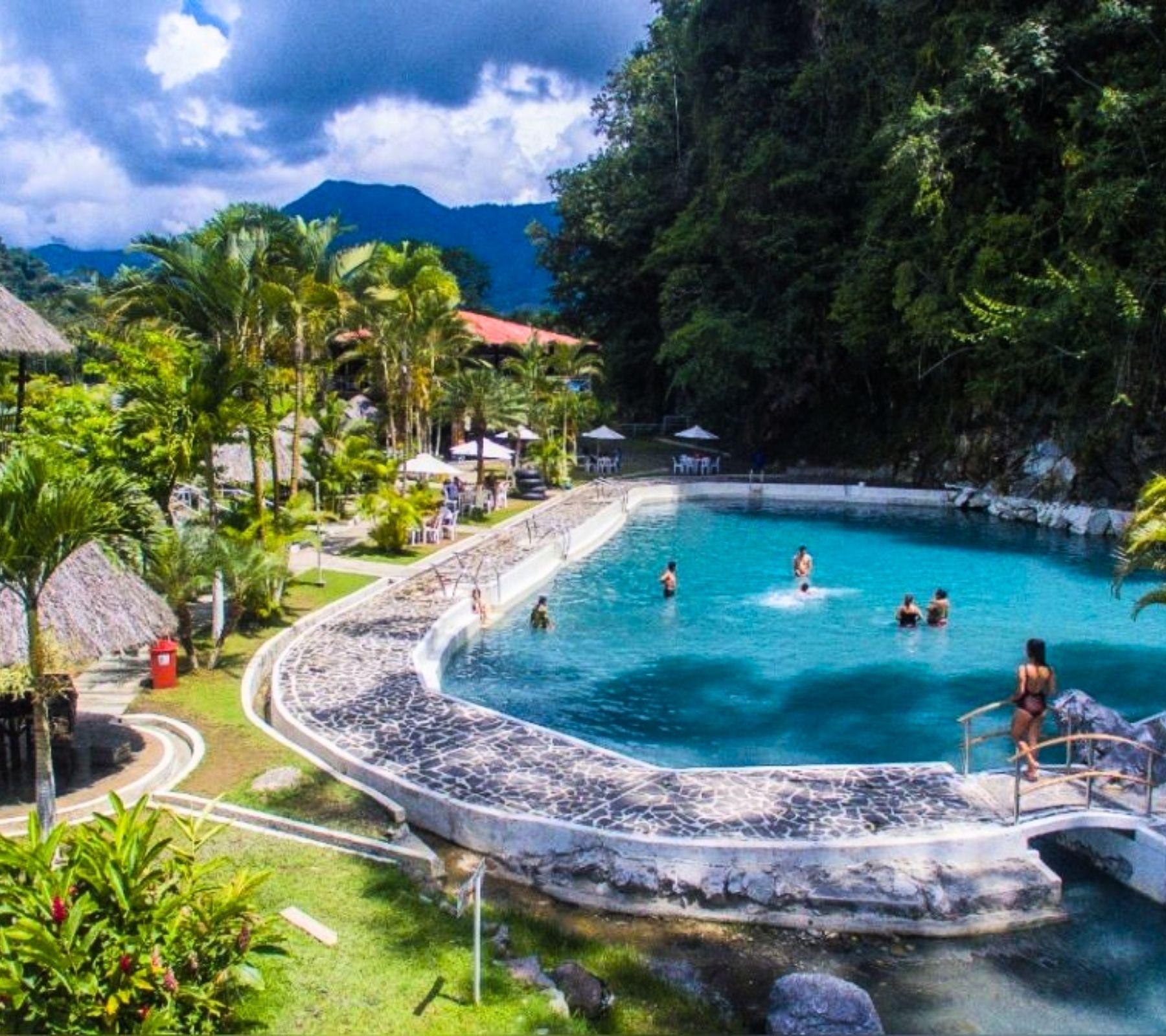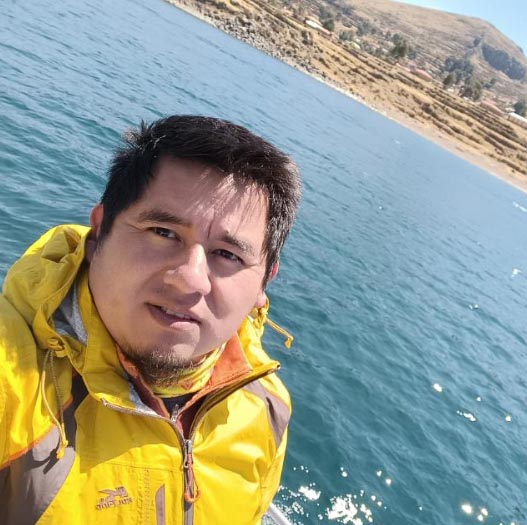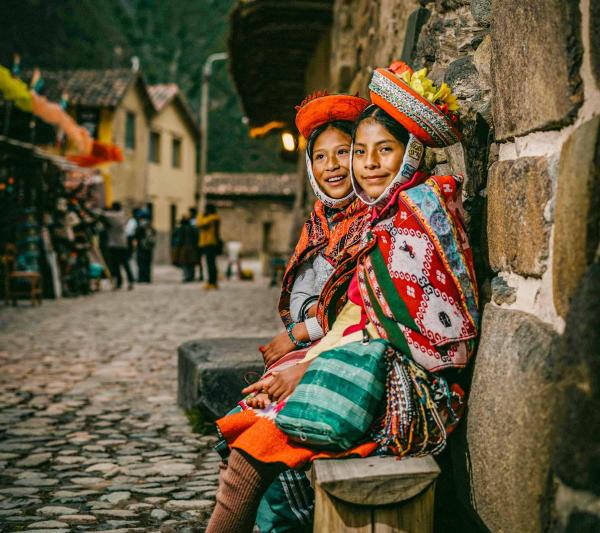The Huánuco region has important tourist attractions, it has snowy mountains, mountain ranges, warm valleys and Amazon jungles. Likewise, it has archaeological ruins, colonial temples and especially a magnificent climate that is considered one of the best in the world.
Huánuco shows you the union of the mountains and the Peruvian jungle. Visit its high mountains, hot springs, caves, lagoons and a seductive rock formation called Sleeping Beauty; Fill yourself with history with its monuments such as the Temple of the Crossed Hands and venture to discover living nature in the Tingo María Owl Cave. The Huanuco region has a lot to offer you, shall we start the trip?
Tourist Attractions
Main Square. It was built in 1845. In the center of the square there is a pool, sculpted by the Italian sculptor Pedro Caretti, using a granite stone for its finish, 4 meters high, which in pre-Hispanic times was an object of worship for
the ancient inhabitants of the area. The square is adorned with ficus and jacaranda trees that surround it.
Cathedral of the city of Huánuco. The old Cathedral was built in 1618, and then rebuilt several times, the last being in the 1970s. The current building, with a modern and functional style, was designed by the German architect Kuno. Inside it houses the beautiful image of the Lord of Burgos, a sculpture made of a single piece of wood, highly revered by the faithful residents. Likewise, relics from the last century are kept inside, such as the chasuble that belonged to Santo Toribio de Mogrovejo and the staff of Monsignor Teodoro del Valle, among others.
San Cristobal Church. It is the first church in the region, built by the Spanish, it houses very old wooden carvings of the “Virgin of the Assumption”, “Saint Augustine” and the “Virgen Dolorosa”.
Church of San Francisco. The Church was built in the year 1560 by the Franciscan friars and the financial contribution of some encomenderos. It is the second Church that was built in the city, annexing a convent that was initially dedicated to
Its Patron “San Bernardino”. The Franciscans were the first catechizers of the territory of Huánuco, taking charge of the first Indian divisions, founding towns and erecting churches. Currently its architecture is neoclassical in style, but the
The decoration of the golden altars is in the Baroque style, with a series of motifs that constitute the contribution of the region's artists.
Church of San Sebastian. The temple of San Sebastián was built at the beginning of the 17th century, located near the Tingo and San Sebastián bridges. The church has a colonial architectural design and has the only sculpture in the world where the image of “Saint Sebastian” appears with smallpox spots on the body.
Calicanto Bridge. It is a work from the last century that extends over the Huallaga River, formerly serving as a link between the cities of Huánuco and Tingo María. The bridge was built from “pebble” stone joined with a mixture of “lime”, sand and egg whites, from which its name is derived. It has an extension of 60 meters and is made up of two columns that end in semicircular balconies.
Kotosh or Temple of the Crossed Hands. Located 5 kilometers west of the city of Huánuco, is the Kotosh temple, which dates back to the pre-ceramic or final archaic period (11,000 – 6,600 BC). Its discovery occurred in the early 1960s, in a study carried out by Japanese archaeologists, who were led by Seiichi Izumi, who managed to show that under a building called “Los Nichitos”, what is known today as “ The Temple of the Crossed Hands”, so called because two sculptures representing a pair of crossed hands were found on one of its walls. Kotosh was formed by a chain of three similar temples, built on stages built and supported on the slope of the hill. In one of the sculptures, the right hand overlaps the left hand and in the other, the left is on top of the right hand, so it is believed that it was related to some idea of duality present in the worldview of the ancient Peruvians of this part. from the country.
Museum of Natural Sciences. The exhibition includes more than 10 thousand pieces, among which are stuffed animals, ceramics from various pre-Hispanic cultures and mummies from Huánuco and Paracas.
Andabamba. Hacienda house located 8 kilometers south of Huánuco, with a colonial structure and which was inhabited by the Franciscan order.
Quicacan. In the place, there is an immense colonial house that served as a cloistered convent. Its design shows beautiful arches that blend with the surrounding landscape.
Tomayquichua. Town located 19 kilometers from the city, above 2000 meters above sea level, place where Micaela Villegas, La Perricholi, was born.
Archaeological complex of Huánuco Pampa or Pampa de Huánuco. Located in the province of Dos de Mayo, it is an administrative center of the Inca culture, where the planning of a city with its houses, streets and buildings can be seen. On the east side of this
The citadel features the most refined building known as Inca Wasi, which apparently was the residence of the Inca.
Archaeological remains of Tantamayo. Located in the province of Huamalies, there is a pre-Inca archaeological complex known as "Skyscrapers of America", because it is located at an altitude of 3,500 meters above sea level.
Huayhuash mountain range. It is located on the border of the regions of Huánuco and Ancash, being made up of different snow-capped mountains of the Alpine or Himalayan type. The most important and difficult peaks are Siula (6,536 meters above sea level), Sarapo (6,143 meters above sea level) and Randoy (5,883 m.a.s.l.).
Garu or Yarowilca Archaeological Complex. Located 73 kilometers from the city of Huánuco, it is one of the most important archaeological centers in Alto Marañón. It possibly would have been the political-administrative headquarters of the Yaros or Yarowilcas and is considered one of the most organized and populated settlements of the pre-Inca era. It presents a series of housing, administrative, religious and defense centers.
City of Tingo María. Capital of the province of Leoncio Prado, it is located 139 kilometers from the city of Huánuco, above 680 meters above sea level. It is located on the banks of the Huallaga River, surrounded by the "Sleeping Beauty" mountain range. This is the second city of greatest importance in the region due to its geographical location, being located as an interconnection point between Lima and the regions of Ucayali and San Martín.
Sleeping Beauty. They are hills that resemble the profile of a woman's body lying on her back and are one of the most notable tourist attractions in the city of Tingo María, which can be seen from the city's main square.
Tingo María National Park. Located 1 kilometer southwest of the city of Tingo María, it is made up of the Sleeping Beauty mountain range. In the park you can find a rich variety of wildlife of up to 104 species of animals including fish, batrachians and reptiles, birds and mammals. It has various attractions such as the Cueva de las Lechuzas, the Cueva de las Pavas and the sulfurous waters of Jacintillo.
The owl cave. Located on the slopes of “The Sleeping Beauty”, 11 kilometers from Tingo María, it is a gigantic limestone cave that houses an important colony of birds, known as guacharos or santanas, very similar to owls.
The turkey cave. Located 15 kilometers from Tingo María, is the final stretch of a deep and narrow ravine through which a stream runs, forming small beaches and wells surrounded by lush vegetation called “Cueva de las pavas”.
The sulfurous waters of Jacintillo. It is a medicinal pool under the hill called Cotomono, which has a lot of sulfur, hence the reason for the name. This medicinal fountain has a size of approximately 30 meters and has a semicircular shape that originates from under the hill. According to the local inhabitants, in the afternoons a beautiful landscape is observed thanks to the presence of the guacharos that come to bathe, as well as the monkeys that come out to drink the water from the fountain.
Father Abad's anchovy. Located 196 kilometers from Tingo María, it is an open canyon, very narrow, covered with vegetation and featuring beautiful waterfalls.
Big Castle Cave. It is located 5 kilometers north of the city of Tingo María. It is a limestone cavern, where a colony of guacharos (Steatornis Caripensis) and wild animals such as beaks, parrots, porcupines, etc. live. Although it is not very large in depth, it is attractive for the large vault it forms at the entrance.
The San Miguel waterfall. It is located south of the city of Tingo María, 25 kilometers away, in the Mariano Dámaso Beraun district. It is the most impressive attraction in the region. The water fall is 200 meters and 50 meters wide. On sunny days a rainbow forms at its base.
Other interesting blogs:
- Where is Machu Picchu?
- Machu Picchu Tickets: Upgrade guide 2024
- Skylodge Adventures Suites
- Machu Picchu Weather
If you want to live this great experience do not hesitate to contact us. Reserve our guided trips to Machu Picchu by contacting our travel experts and you will be closer to completing your adventure:






